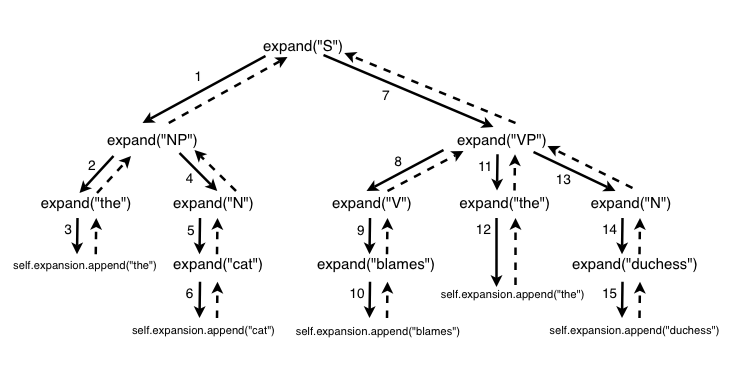Traditionally, callbacks were passed and invoked when an asynchronous operation returned with data which are handled using a promise.,some . Instead, it will use a new function we create and yield values instead of await promises. In chapter 3, we detailed how promises uninvert the inversion of control of. As i understand it ecma6 generators are supposed to be able to yield to a function that returns a promise, eventually returning the . In other words, yield caused a value to be sent out from the generator .

What makes javascript generator functions so different is that they do not initially execute, and instead they return an iterator object .
What makes javascript generator functions so different is that they do not initially execute, and instead they return an iterator object . Function* weapongenerator(){ #a yield katana; In this tutorial, you will learn about the javascript yield keyword and how to use it in generator functions. In chapter 3, we detailed how promises uninvert the inversion of control of. As i understand it ecma6 generators are supposed to be able to yield to a function that returns a promise, eventually returning the . We've already said that inside of our generator we need to yield a promise. Control is returned back to the generator when the yielded promise settles. The objects returned by generators are iterable; In some cases, we even need to set the object.done property return value to true/false using iterators. Traditionally, callbacks were passed and invoked when an asynchronous operation returned with data which are handled using a promise.,some . Generators and promises are both introduced by es6. Each yield contributes to the. Instead, it will use a new function we create and yield values instead of await promises.
In some cases, we even need to set the object.done property return value to true/false using iterators. But who will take care of resolving that promise? As i understand it ecma6 generators are supposed to be able to yield to a function that returns a promise, eventually returning the . In the following code block, we define a function . In chapter 3, we detailed how promises uninvert the inversion of control of.

Control is returned back to the generator when the yielded promise settles.
Generators and promises are both introduced by es6. Traditionally, callbacks were passed and invoked when an asynchronous operation returned with data which are handled using a promise.,some . Returns a function that can use yield to yield promises. In other words, yield caused a value to be sent out from the generator . But who will take care of resolving that promise? The objects returned by generators are iterable; In this tutorial, you will learn about the javascript yield keyword and how to use it in generator functions. We've already said that inside of our generator we need to yield a promise. In the following code block, we define a function . Function* weapongenerator(){ #a yield katana; What makes javascript generator functions so different is that they do not initially execute, and instead they return an iterator object . Each yield contributes to the. Control is returned back to the generator when the yielded promise settles.
Each yield contributes to the. Returns a function that can use yield to yield promises. What makes javascript generator functions so different is that they do not initially execute, and instead they return an iterator object . In other words, yield caused a value to be sent out from the generator . In the following code block, we define a function .

In chapter 3, we detailed how promises uninvert the inversion of control of.
In the following code block, we define a function . Control is returned back to the generator when the yielded promise settles. In some cases, we even need to set the object.done property return value to true/false using iterators. But who will take care of resolving that promise? In other words, yield caused a value to be sent out from the generator . Generators and promises are both introduced by es6. Each yield contributes to the. As i understand it ecma6 generators are supposed to be able to yield to a function that returns a promise, eventually returning the . The objects returned by generators are iterable; Returns a function that can use yield to yield promises. Traditionally, callbacks were passed and invoked when an asynchronous operation returned with data which are handled using a promise.,some . Instead, it will use a new function we create and yield values instead of await promises. What makes javascript generator functions so different is that they do not initially execute, and instead they return an iterator object .
View Javascript Generator Yield Promise Images. In this tutorial, you will learn about the javascript yield keyword and how to use it in generator functions. Function* weapongenerator(){ #a yield katana; As i understand it ecma6 generators are supposed to be able to yield to a function that returns a promise, eventually returning the . We've already said that inside of our generator we need to yield a promise. The objects returned by generators are iterable;

